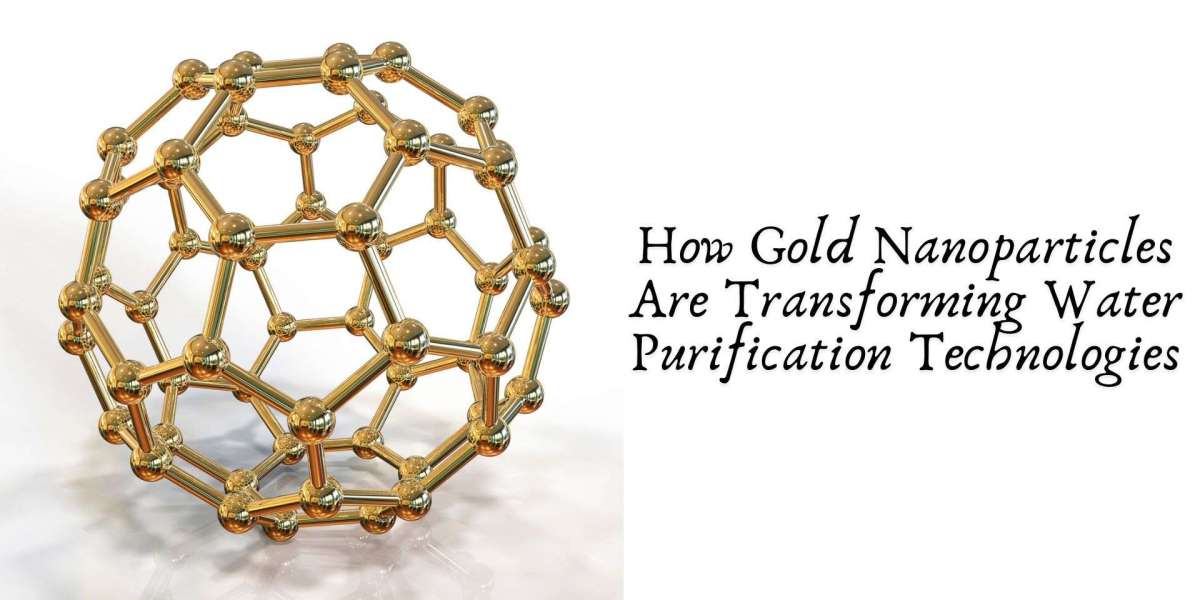Water purification has been a critical concern for centuries, with advancements continuously evolving to meet the growing demands for clean and safe drinking water. Among the latest innovations, gold nanoparticles (AuNPs) have emerged as a groundbreaking solution, promising to revolutionize water purification technologies. These tiny particles, typically ranging from 1 to 100 nanometers in size, exhibit unique properties that make them highly effective in various purification processes. This article delves into the transformative impact of gold nanoparticles on water purification technologies, exploring their mechanisms, applications, and future potential.
Unique Properties of Gold Nanoparticles
Gold nanoparticles possess distinctive physical, chemical, and optical properties that set them apart from other materials used in water purification. Some of these properties include:
High Surface Area to Volume Ratio: The small size of gold nanoparticles results in a large surface area relative to their volume, enhancing their reactivity and adsorption capabilities.
Catalytic Activity: AuNPs exhibit excellent catalytic properties, enabling them to accelerate chemical reactions that break down contaminants in water.
Biocompatibility: Gold is non-toxic and biocompatible, making gold nanoparticles safe for use in water purification processes without introducing harmful by-products.
Optical Properties: Gold nanoparticles exhibit unique optical properties, such as localized surface plasmon resonance (LSPR), which can be harnessed for detecting and removing contaminants.
Mechanisms of Water Purification
Gold nanoparticles can purify water through various mechanisms, each targeting different types of contaminants. Key mechanisms include:
Adsorption
The high surface area of AuNPs allows them to adsorb contaminants effectively. Heavy metals, organic pollutants, and pathogens can be captured on the surface of gold nanoparticles, facilitating their removal from water. For instance, gold nanoparticles can adsorb mercury, lead, and arsenic, which are common and hazardous heavy metals found in contaminated water sources.
Catalysis
Gold nanoparticles act as catalysts in chemical reactions that degrade organic pollutants. They can enhance the breakdown of complex organic molecules into simpler, less harmful compounds. This catalytic activity is particularly useful in treating industrial wastewater containing persistent organic pollutants (POPs).
Photocatalysis
Gold nanoparticles can be combined with other materials, such as titanium dioxide (TiO2), to form photocatalytic composites. When exposed to light, these composites generate reactive oxygen species (ROS) that can degrade organic contaminants and kill bacteria. This process, known as photocatalysis, leverages the optical properties of AuNPs to enhance the efficiency of water purification under light exposure.
Antimicrobial Activity
Gold nanoparticles exhibit inherent antimicrobial properties, making them effective against a wide range of pathogens, including bacteria, viruses, and fungi. The interaction between AuNPs and microbial cells can disrupt cell membranes and inhibit essential cellular functions, leading to the inactivation of pathogens in water.
Applications of Gold Nanoparticles in Water Purification
The unique properties and mechanisms of gold nanoparticles have led to their application in various water purification technologies. Some notable applications include:
Filtration Systems
Gold nanoparticles are integrated into filtration systems to enhance the removal of contaminants. These systems can be used in both point-of-use devices and large-scale water treatment plants. AuNPs-coated filters can capture heavy metals, organic pollutants, and pathogens, providing clean and safe drinking water.
Photocatalytic Reactors
Photocatalytic reactors utilize gold nanoparticle composites to degrade organic pollutants under light exposure. These reactors can be deployed in wastewater treatment facilities to treat industrial effluents and reduce the environmental impact of hazardous chemicals.
Sensing and Detection
The optical properties of gold nanoparticles enable their use in sensors for detecting contaminants in water. AuNPs-based sensors can identify the presence of heavy metals, pesticides, and pathogens with high sensitivity and specificity. This capability allows for real-time monitoring and rapid response to water contamination events.
Antimicrobial Coatings
Gold nanoparticles can be incorporated into antimicrobial coatings for water storage tanks, pipes, and distribution systems. These coatings prevent the growth of biofilms and the proliferation of pathogens, ensuring the microbiological safety of water supplies.
Future Potential and Challenges
While gold nanoparticles hold great promise for transforming water purification technologies, several challenges must be addressed to realize their full potential. Key considerations include:
Cost and Scalability
The high cost of gold limits the widespread adoption of gold nanoparticles in water purification. Research is ongoing to develop cost-effective synthesis methods and optimize the use of AuNPs to balance performance and affordability.
Environmental Impact
The environmental impact of gold nanoparticles, including their fate and behavior in natural water systems, requires further investigation. Understanding the long-term effects of AuNPs on ecosystems and human health is crucial for their safe and sustainable use.
Regulatory and Standardization
Regulatory frameworks and standardized testing protocols are needed to ensure the safety and efficacy of gold nanoparticle-based water purification technologies. Establishing guidelines for the production, application, and disposal of AuNPs will facilitate their responsible deployment.
Conclusion
Gold nanoparticles are poised to revolutionize water purification technologies with their unique properties and versatile mechanisms. From adsorption and catalysis to antimicrobial activity and sensing, AuNPs offer innovative solutions to address the global challenge of providing clean and safe drinking water. Continued research and development, coupled with efforts to overcome cost and environmental challenges, will pave the way for the widespread adoption of gold nanoparticle-based water purification systems. As these technologies advance, they hold the potential to significantly improve water quality and contribute to a sustainable future.







